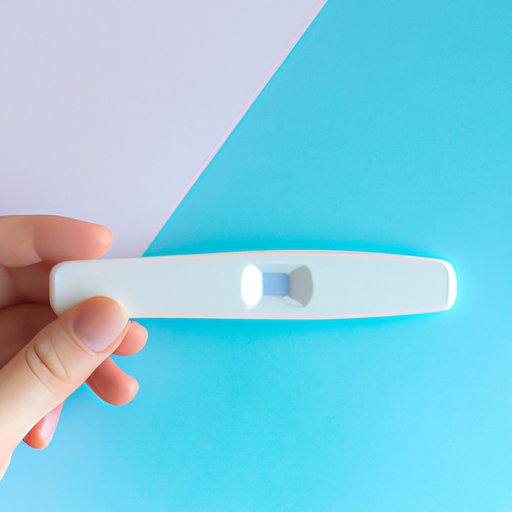
Introduction
Pregnancy testing can be an anxious and stressful experience for many women, with uncertainty around when to take the test and how to interpret the results leading to additional stress. For women trying to conceive, early testing can feel like the key to quelling anxiety and providing a sense of control. However, early testing can also bring about false negatives and other emotional challenges. This article will explore the science behind pregnancy testing, offer guidance on when to take a test, and provide strategies for managing the emotional rollercoaster of waiting for results.
Exploring the Science Behind Home Pregnancy Tests: When they Work and Why
Home pregnancy tests work by detecting human chorionic gonadotropin (hCG) in urine, a hormone that increases when a fertilized egg implants in the uterus. These tests use antibodies sensitive to hCG to produce a positive or negative result. However, the accuracy of the test is affected by several factors, including the timing of the test and the sensitivity of the test itself. For example, some tests may be more sensitive to hCG than others and may produce a positive result earlier in the pregnancy.
The Pros and Cons of Early Home Pregnancy Testing
The benefits of early home pregnancy testing are clear: it can alleviate anxiety and provide a sense of control for women trying to conceive. However, there are also drawbacks to early testing, including potential false negatives and the anxiety that comes with waiting for an accurate result. False negatives can be especially frustrating, as they occur when a test is taken too early in the pregnancy to detect hCG. It is important to balance the benefits and drawbacks of early testing when deciding when to take a test.
How to Accurately Determine the Right Time to Take a Pregnancy Test
Tracking ovulation and menstrual cycles is essential to determining the right time to take a pregnancy test. There are several methods for doing so, including using ovulation predictor kits and tracking basal body temperature. It is important to use this information to calculate the best time to take the test, usually around the time of a missed period. Additionally, taking the test too early can lead to a false negative, so it is essential to follow the instructions for the specific test being used.
Interpreting Home Pregnancy Test Results: What You Need to Know
Interpreting home pregnancy test results can be confusing, especially for those who have never taken a test before. Most tests have two possible results: positive and negative. A positive result indicates the presence of hCG and a likely pregnancy, while a negative result indicates the absence of hCG. It is important to follow the instructions carefully and wait the appropriate amount of time before interpreting the results to avoid an inaccurate interpretation.
The Emotional Rollercoaster of Pregnancy Testing: Managing Expectations and Anxiety
Waiting for pregnancy test results can be an emotional rollercoaster, leading to anxiety, hope, and disappointment. It is essential to manage these emotions throughout the process, and there are several strategies for doing so. Setting realistic expectations and being prepared for a range of possible outcomes can help alleviate anxiety. Additionally, seeking support and engaging in self-care activities can provide additional comfort and stress relief.
DIY vs. Professional Pregnancy Testing: Which is Better for Your Health and Sanity?
There are pros and cons to both home pregnancy testing and professional medical care. Home testing can provide a sense of control and offer privacy, while professional care can provide more accurate results and access to additional medical care if necessary. It is important to consider individual circumstances and available resources when deciding which option to choose. Additionally, it is essential to seek professional care if there are any concerns about pregnancy or complications arise.
Conclusion
Pregnancy testing can be an overwhelming and stressful experience, but understanding the science behind testing and emotional management strategies can help alleviate anxiety and increase a sense of control. By tracking ovulation and menstrual cycles, following test instructions carefully, and seeking emotional and medical support as needed, women can navigate the ups and downs of pregnancy testing with confidence and ease.





